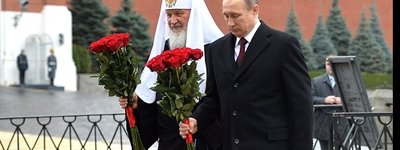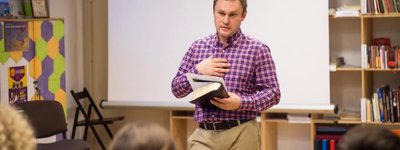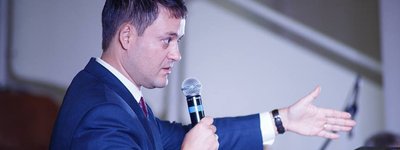Pluralism and Secularization
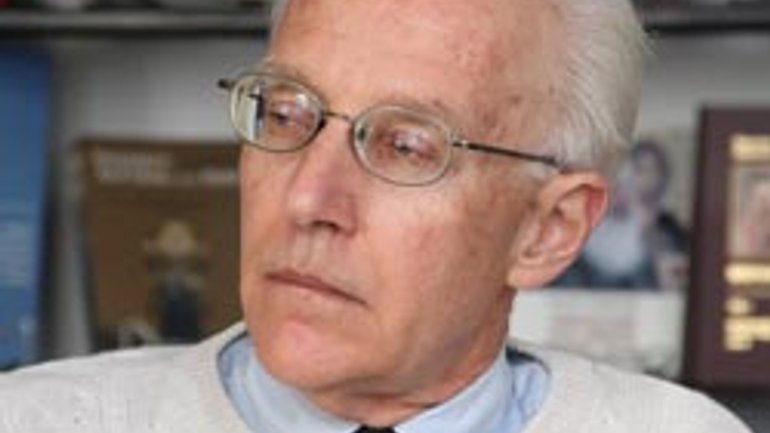
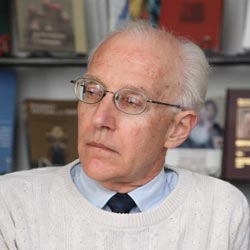 Neither Poland nor the United States offers a useful model for Ukraine. In terms of religious pluralism, Ukraine lies somewhere in between, for its three Orthodox Churches and its Greco-Catholic Church all belong to a single Kievan-Byzantine tradition that can serve as a source of values for the new post-Maidan Ukrainian nation.
Neither Poland nor the United States offers a useful model for Ukraine. In terms of religious pluralism, Ukraine lies somewhere in between, for its three Orthodox Churches and its Greco-Catholic Church all belong to a single Kievan-Byzantine tradition that can serve as a source of values for the new post-Maidan Ukrainian nation.
Last Christmas I heard a Ukrainian version of “Jingle Bells” on the internet. While “Jingle Bells” is a favorite American Christmas carol, its lyrics are notable for the absence of religious content. It can be seen as a symbol of the secularization of the American Christmas. Does this suggest that as American influence increases, the Ukrainian Christmas is headed for secularization too?
The prominent sociologist of religion José Casanova would probably say no. Speaking before the Shevchenko Scientific Society Montreal chapter last October 15, he reportedly said that Ukraine, now the most pluralistic society in Europe, has adopted a model of religious pluralism like that of the United States (Alexandra Hawryluk, “Jose Casanova speaks about Ukraine’s religious communities and the Maidan mobilization,” Ukrainian Weekly, December 18, 2015). In Ukraine, as in the U.S., neither the state nor national identity is bound up with religion, and there is a wide variety of churches and other religious groups which enjoy full toleration. The people of Ukraine, like those of the United States, are known to be “very religious.”Hence, it would appear that American-style religious pluralism is good for religion.
As evidence of American-style religious pluralism in Ukraine, Professor Casanova citedthe Maidan, where virtually all religious groups in Ukraine supported the protests, and the All-Ukrainian Council of Churches and Religious Organizations, which meets regularly and comments on proposed legislation and other matters of national importance. It is certainly true that Ukraine has traditionally seen considerable religious pluralism, and that its liberal law on religion has attracted new religious groups, which are free to proselytize. It is also true that Ukraine has a high level of religiosity, particularly in Western Ukraine, which is the most religious and most pluralistic, as well as the most pro-democratic and pro-European part of the country.
As an example of the positive relationship between religion and pluralism, the speaker cited Poland. Poland (at least until recently) has followed a “Western” path of democracy, tolerance, and pluralism. And Poland remains a strongly Catholic country. It does have a history of religious diversity going back several hundred years. But it would be simplistic to attribute the strength of its Catholicism to its historical tolerance of Protestants and Orthodox. Furthermore, since 1989 Poland has seen the same kind of erosion of Catholic practice and belief that one sees in other traditionally Catholic countries, albeit not as precipitous.
Professor Casanova’s conclusions are of course based on careful empirical study of data which a press report on a public lecture cannot be expected to cite. Among his contributions to the sociology of religion is his study “Public Religions in the Modern World” (1994), where he challenged the “secularization theory.” Distinguishing three independent types of secularization – social differentiation of sacred and secular spheres, diminished religious influence, and privatization of religion -- he argued that a “deprivatization” of religion was taking place which gave religionnew importance in the modern world. Churches, he showed, could revive and participate in public life, as long as they responded adequately to the challenges of modernity and accepted the “differentiation” of society into secular andsacred spheres. In this way religion could contribute to modernity, and even help to define it in ways that were not purely secular (see José Casanova, Public Religions in the Modern World, chapter 8).
Indeed, Ukraine would appear to be an example of a society that has experienced differentiation not only into secular and sacred spheres, but into a multiplicity of religions – in other words, pluralism. But does that make it similar to the United States? And is Ukraine’s religiosity a result of this pluralism, or merely coincidental?
The United States was formed from colonies founded partly as sectarian quests for religious liberty. Although each successive religious split was seen at the time as unfortunate (for example, Roger Williams’ secession from the Puritans), in the long run the endless multiplication of religious groups has been regarded as a positive exercise of freedom of conscience. Furthermore, the very diversity of religions was seen as preventing any one of them from dominating society. In Ukraine, by contrast, religious divisions continue to be seen as tragic, and in need of healing. Moreover, most of them are considered to have been instigated by external forces: the East-West split of 1054 (in which KyivanRus’ was not involved), Polish pressure for conversion to Roman Catholicism (spawning the Union of Brest of 1596), and the Muscovite take-over of the KyivanMetropolitanate in 1686. Consequently, these divisions have been more jurisdictional, that is, political, than dogmatic. All of Ukraine’s three Orthodox Churches share a single theology, and many Ukrainian Greek-Catholics consider themselves “Orthodox in union with Rome.” As a result, the tendency of religious leaders in Ukraine has been to seek reconciliation and reunion. America celebrates its religious diversity in the name of individual freedom, but Ukraine seeks to overcome it in the Christian hope “that all may be one.”
Professor Casanova reportedly asserts that Americans are “very religious.” There are various ways to test such a generalization. On 13 April 2015, the “Telegraph” (UK) reported that even in terms of self-identification, only 56% of the population of the United States is “religious” – compared to 73% in Ukraine.The North Americanfigures are considerably lower than those for Central and South America, Asia, and Africa.
Moreover, the general trend in American Christianity is decline. Between 2007 and 2014, according to the Pew Research Center surveys, the religiously unaffiliated (including atheists and agnostics) grew from 16% to 23%.
With regard to Catholics, the Center for Applied Research in the Apostolate (CARA) at Professor Casanova’s own Georgetown University recently analyzed the statistics provided by the official U.S. Catholic Directory. It found that between 2000 and 2014, the absolute numbers of self-identified and parish-affiliated Catholics had risen, as had those of seminarians and ordinations. Weekly mass attendance had also increased. However, a significant portion of these increases could be attributed to the large influx of foreign-born Catholics (4.4 million) during that period. At the same time, there were net losses in the numbers of Catholic parishes, priests, religious brothers and sisters, as well as fewer baptisms, first communions, confirmations, and marriages.
There are thus many indicators that religion in general, and Christianity in particular, aredeclining in America. But is Americansociety still Christian in any real sense?
In “The Idea of a Christian Society,” T.S. Eliot describedthe process of de-Christianization. Writing of British society in 1939, he stated,“To speak of ourselves as a Christian Society… is an abuse of terms. We mean only that we have a society in which no one is penalized for the formal profession of Christianity; “but we conceal from ourselves the unpleasant knowledge of the real values by which we live” (T.S. Eliot, The Idea of a Christian Society, in Christianity and Culture, 1949,p. 7). One could make the same comment about the U.S. today.
Eliot explains that “…a society has ceased to be Christian when religious practices have been abandoned, when behavior ceases to be regulated by reference to Christian principle, and when in effect prosperity in this world for the individual or for the group has become the sole conscious aim”(Eliot p. 10). He acknowledges, however, that “a society has not ceased to be Christian until it has become positively something else.” (ibid.) That had not happened in Britain as of 1939. Has it happened here?
Professor Emeritus of History at St. Louis University James Hitchcock thinks it has. “The present age,” he writes, “is the saga of one religion being superseded by another.” That new religion, in his view, is secularism (James Hitchcock, “Idols of the State,” Touchstone, January-February 2016, pp. 24-27).
What does this mean for the individual religious believer? “The problem of living a Christian life in a non-Christian society is now very present to us,” said Eliot in 1939. “It is not merely the problem of a minority in a society of individuals holding an alien belief. It is the problem constituted by our implication in a network of institutions from which we cannot dissociate ourselves: institutions the operation of which appears no longer neutral, but non-Christian.”(Eliot p. 17) The majority of Christians, who are not even conscious of their dilemma, are “becoming more and more de-Christianized by all sorts of unconscious pressure: paganism holds all the most valuable advertising space. Anything like Christian tradition transmitted from generation to generation within the family must disappear, and the small body of Christians will consist entirely of adult recruits.” (Eliot, p. 18) This seems an apt description not only of England in 1939, but of the United States in 2016.
De-Christianization starts at the top, with a nation’s leaders. In his renowned work “After Virtue” (1981, 2nd ed. 1984), Alasdair MacIntyre, a professor of philosophy at the University of Notre Dame, compares our times with the fall of Rome, when local communities had to be formed in order to sustain civility and the moral life in the coming dark ages. “This time, however,” he writes,“the barbarians are not waiting beyond the frontiers; they have already been governing us for quite some time.” (MacIntyre, p. 263.) Currently the U.S. is led by an articulate lawyeraverse to broad philosophical principles who in 2004, before his successful candidacy for the presidency, described “sin” as being out of alignment with whatever he thought was right, and proper spiritual alignment as “being true to myself.”
A prime indicator of a society’s moral condition is the law, which serves as both a mirror and a determinant of social attitudes.On 26 June 2015 the U.S. Supreme Court overturned the concept of marriage held for centuries by the world’s three major religions. It is also pertinent to mention that federal appellate judge Richard Posner, described in Harvard Magazine as “the most influential American legal scholar” for the past fifty years, is noted for his dissent from a decision upholding a state ban on partial-birth abortion, and his opinion striking down a state law banning same-sex marriage. As a “legal pragmatist” who applies economic doctrines such as cost-benefit analysis to his decisions, Posner once speculated, in a theoretical article, about a “free market in babies.” He opposes building law on an ethical basis, commenting that “I hate the moral philosophy stuff.” (Lincoln Caplan, “Rhetoric and Law: The Double Life of Richard Posner, America’s Most Contentious Legal Reformer” Harvard Magazine, January-February 2016, pp.49-57). Does the current state of American law reflect a society of “very religious” people?
Another indicator of a nation’s religiousness is its culture. While genuine folk culture languishes, the role models known as the “icons” (a term as apt as it is blasphemous) of so-called popular culture influence mass standards of conduct. To the popular mind, their example normalizes such behavior as fornication, adultery, and bearing children out of wedlock. The point here is not that such deviation from moral standards is new – Christians have never been able to avoid sinning – but that the standards themselves have been abandoned. So have the meanings of Christian holy days. Today’s “holiday” celebrationsreplace their own raisons d’être: more and more Americans celebrate Christmas for the sake of celebration, not in order to commemorate the birth of the Savior.
It may well be that American-style religious pluralism strengthensdemocracy. That depends on whether it actually enhances the people’s ability to govern themselves. By preventing any one religious group from determining the values of society, itlimits the influence of religion altogether. It can thus hardly be said that pluralism strengthens the people’sreligiosity.Coincidence does not mean causality:America’s religious pluralism and her traditionally strong religiosity may simply have been two independent aspects of the same phenomenon. It has been forcefully argued that the American approach to religious pluralism, which follows the theories of John Locke, has resulted in the privatization, marginalization, and “trivialization” of religion (Thomas Storck, From Christendom to Americanism and Beyond, 2015, chapter 16). But it must be admitted that this relationship is not necessarily causal either. Pluralism and declining religiosity may be independent of each other.
What, then, has caused the decline of religion in America? Anglican columnist Regis Nicoll believes that “liberal” Christianaccommodationistsare themselves responsible for the de-Christianization of American society (Regis Nicoll, “Wilberforce for Good,” Touchstone January-February 2016 pp. 15-18). “When the behaviors and beliefs of Christians mirror those of their unbelieving neighbors, it is evidence that the Church is a product of the culture it is called to transform, and that instead of producing disciples, it has been turning out ‘belonging nonbelievers,’ if not ‘functioning atheists.’” (id. p. 16) James Hitchcock agrees. “The secularist creed,” he writes, “was disseminated through the liberal churches themselves” (Hitchcock, op. cit., p. 26). Others argue that the “conservative” churches, too, have contributed to secularization, often by way of politicization.
There are, of course, many aspects of American life worthy of emulation. Among them (at least until recently) has been a high degree of toleration of diverse religious and other beliefs. But in view of America’s secularization, its religious life does not appear to be a model to follow. While private religious belief cannot be eliminated in even the most repressive society, in a secularizing society public expressions of religious belief, and public conduct in accord with it, are increasingly restricted. In any case, there appear few credible signs of the “deprivatization” of religion that Professor Casanova sees in other societies.
In fact, neither Poland nor the U.S. offers a useful model for Ukraine. If the U.S. represents an extreme of religious diversification that Ukraine need not imitate, Poland exhibits a monolithic Catholicism that Ukraine cannot replicate. In terms of religious pluralism, Ukraine lies somewhere in between, for its three Orthodox Churches and its Greco-Catholic Church all belong to a single Kievan-Byzantine tradition that can serve as a source of values for the new post-Maidan Ukrainian nation.
It is perilous to take any society as a model for another, if only because the conditions of each society are unique. Whether or not American religious pluralism and American religiosity are causally related, they cannot be replicated in Ukraine or anywhere else. And why should they be?If pluralism is indeed independent of secularization, then Ukraine can safely adopt it. But is pluralism something to adopt? Pluralism is a fact of life, in Ukraine as in America. It should be respected. But there is no need to cultivate it. What Ukraine, threatened by an outside force that exploits every opportunity to divide it, needs today is solidarity. There can be unity with diversity; there need not be pluralism at the expense of solidarity.
What lies behind the notion of religious pluralism is tolerance. But tolerance presupposes a difference in religious views – not their total absence. There is no meaningful religious tolerance in a totally secularized society. There can be no religious pluralism in a society that has lost religion. It makes no sense for a society to emulate Western pluralism while adopting Western secularism.
One can agree withthose scholars, including Casanova, who think that secularization is not inevitable, and that religion can be a part of modernity. Some advocate a redefinition of modernity that will include religion, while others call for new directions in religion that will make that redefinition a reality. See, for example, Secular supercessionism and alternative modernity. While Europe seems more secularized than the United States, it is worth noting that Europe has a vast reserve of Christian tradition. Religiously diverse at birth, the United States was founded by deists as an essentially agnostic state – there is no mention of a deity in the preamble to the Constitution – while European civilization was decidedly Christian from its beginning. America’s trajectory from a religiously diverse society with an agnostic state, to an agnostic society, may not be reversible. Future generations of Europeans could return to the Christian core of their culture; once Americans have dropped their pretense of religiosity, going back will not be easy. But on both continents, the matter is still up for discussion.
If Ukrainians join this discussion and work to re-integrate religion into their culture, their nation may experience a healthy modernity. Like Europe itself, Ukraine was Christian at birth. It inherited the Byzantine notion of church-state “symphony” and cooperation. Despite their confessional diversity, Ukrainians could build an Eastern Christian consensus that, with a democratic state, would guarantee religious liberty to minorities without abdicating the Christian heritage. But if they follow North American society into the dead end of secularism, they will find themselves not – as they may imagine – in the avant-garde of Western civilization, but in its rear guard, and moving in the wrong direction.





